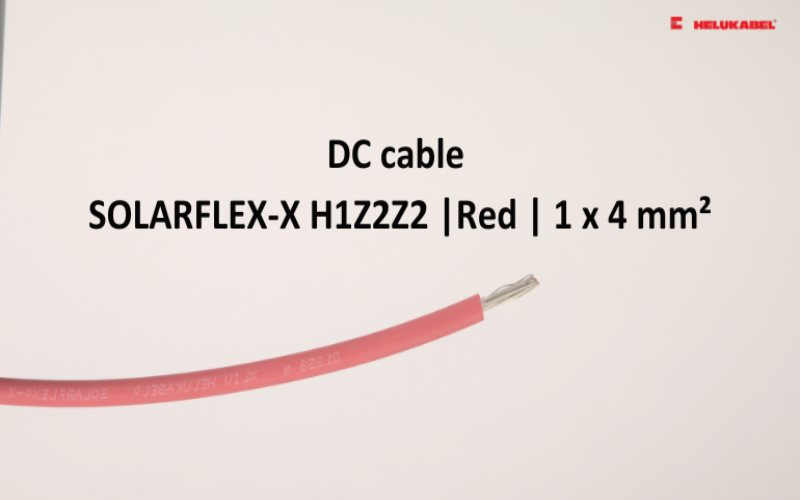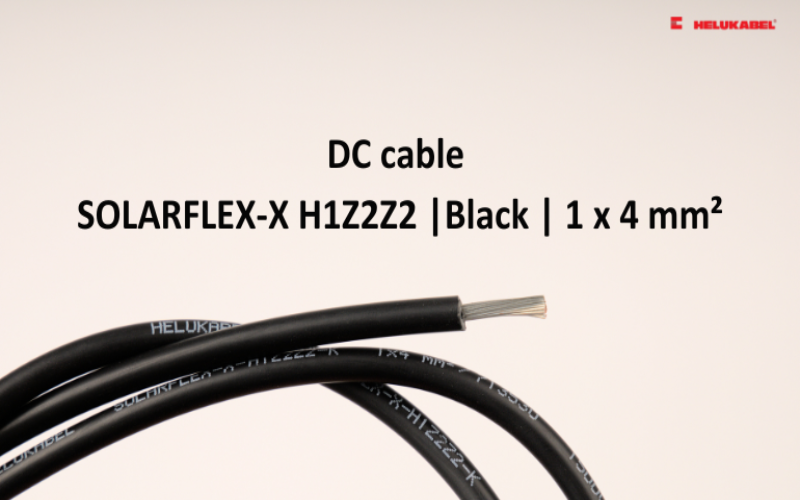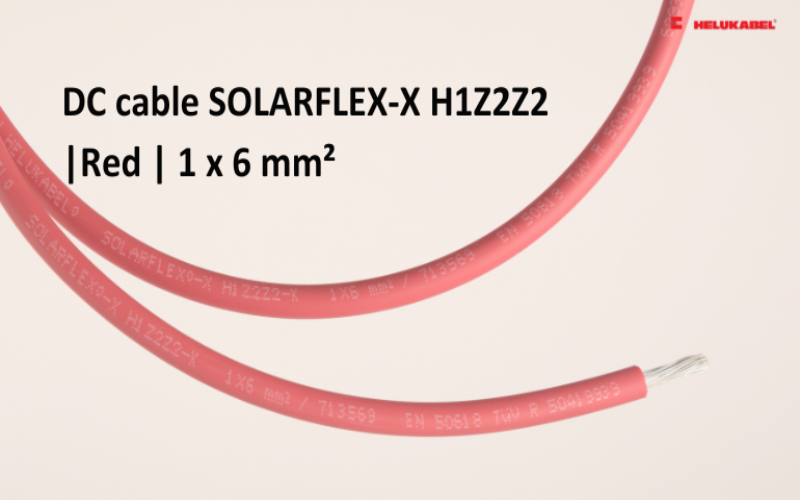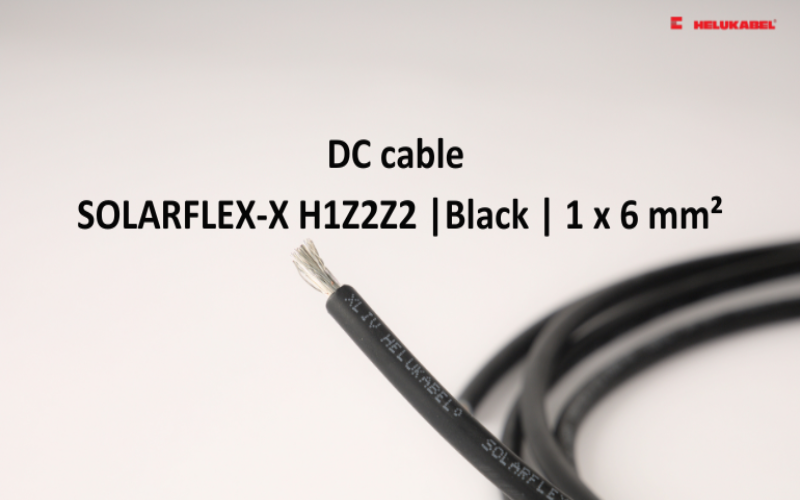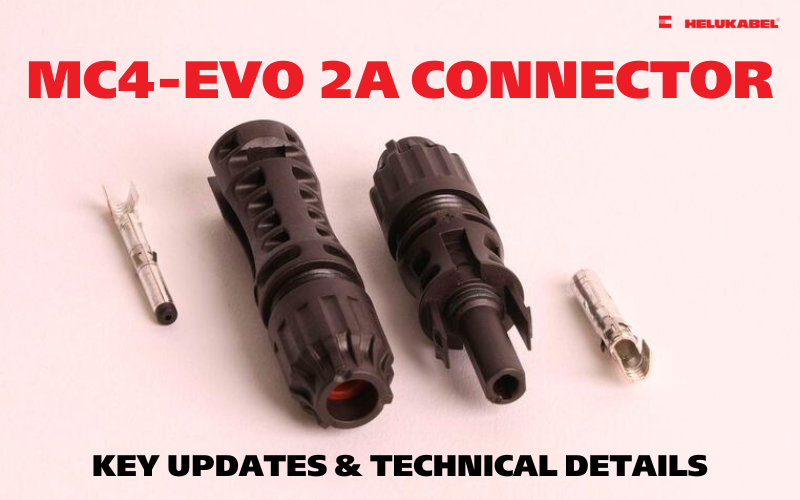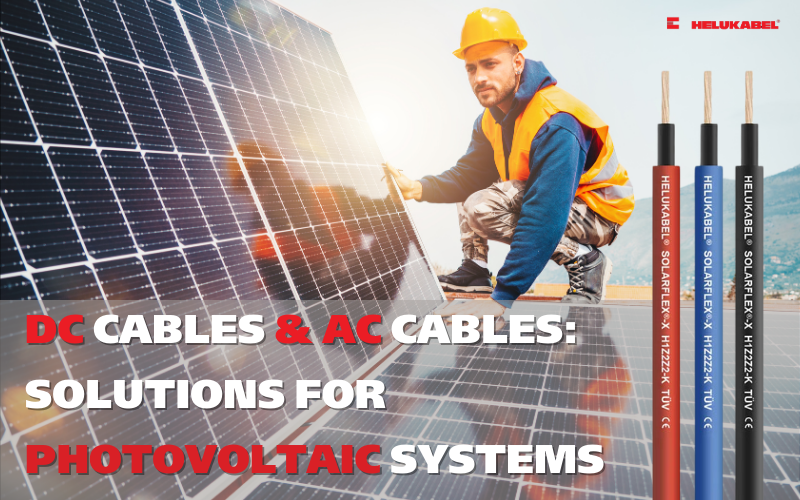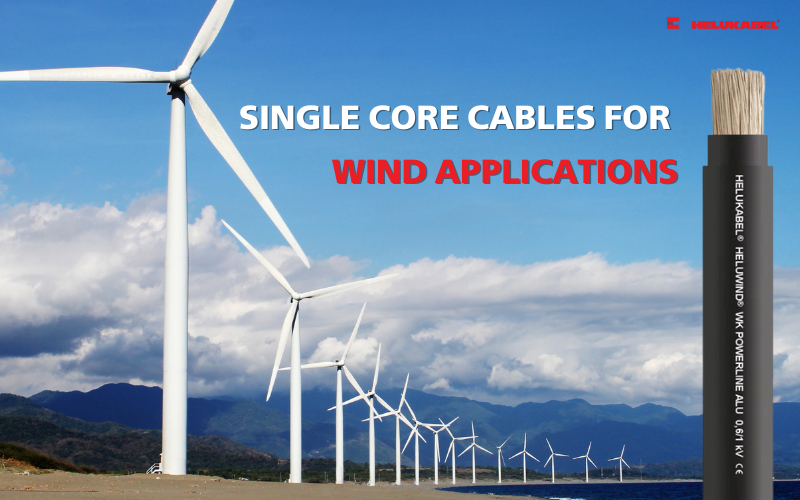A glance at DC cables for floating photovoltaic systems
DC cables for floating photovoltaic systems must meet specific requirements that differ from those for conventional systems. Let's explore these factors in the following article!
Solar energy has become increasingly popular in recent years, thanks to the global trend of using renewable energy sources. While ground-mounted photovoltaic systems are the most common way to harness solar power, floating photovoltaic systems are gaining traction. This type of power generation utilizes large bodies of water to set up a floating solar unit, allowing for the capture of sufficient solar energy without the need for land use.
1. What are floating photovoltaic systems?
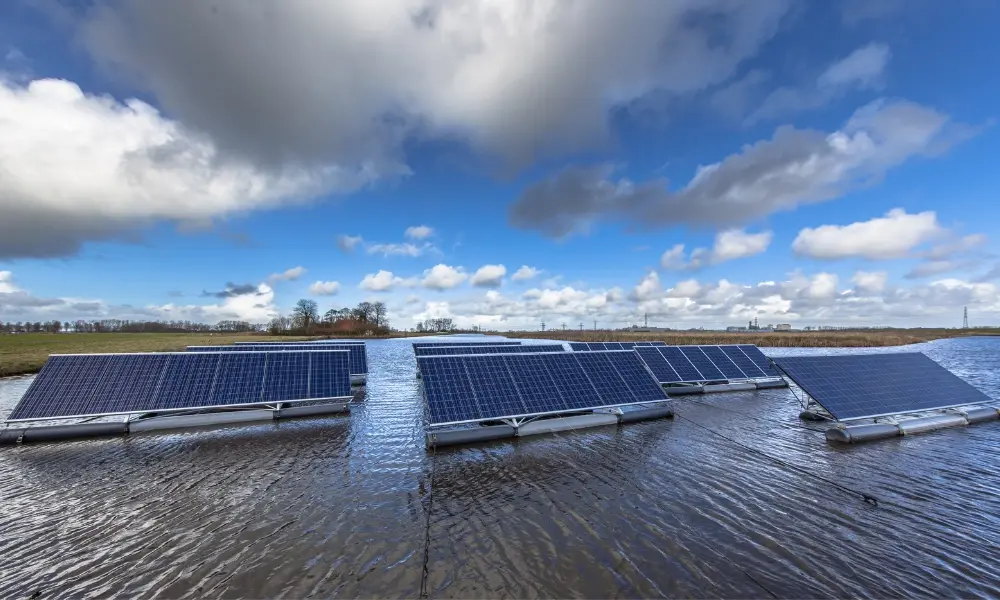
Floating photovoltaics, also known as floating solar energy, refers to a system of solar panels that are installed on water rather than being fixed to the ground or buildings. The floating solar panels are mounted on floating structures anchored to the bottom or shoreline of a water body, such as a reservoir, lake, pond, or canal. The solar array floats on the water's surface, allowing the water to cool the panels, which enhances their performance.
Floating photovoltaic farms operate similarly to ground-mounted photovoltaic farms, but they float on water instead of being installed on land. They use the same types of solar panels and inverters to generate electricity from sunlight. The electricity produced from solar energy is directed to a central inverter before being transmitted to shore through specialized DC and AC cables designed for underwater solar systems. The energy from the inverter is then sent to a transformer to lower the voltage before being integrated into the transmission system to supply consumers.
2. Requirements for DC cables used in photovoltaic systems

2.1 The insulation of DC cables
DC cables used in floating photovoltaic systems are frequently exposed to water. Because inverters have ground fault detection capabilities, even minor damage to the cable’s protective sheath can cause ground faults in a humid environment, leading to system interruptions.
Therefore, for floating photovoltaic systems, it is advisable to use DC cables that meet marine standards. DC cables made from XLPE (cross-linked polyethylene) materials can also be utilized for these applications. The use of waterproof tape will help prevent water ingress into the cable in the event of insulation failure. Floating cables should be protected by flexible conduits or cable trays with covers. The insulation of DC cables must be resistant to UV rays, hydrolysis, and fire.
2.2 DC cables need to be heat-resistant and UV-resistant
Floating photovoltaic systems are directly exposed to sunlight, leading to elevated temperatures of the water surface and the surrounding air. High temperatures can degrade the insulating properties and accelerate the aging of the cable sheath. The DC cables used must be capable of withstanding high temperatures to avoid rapid deterioration. Cables and insulation exposed to sunlight need to be UV resistant to prevent degradation or failure. Cables that do not meet UV standards can become brittle and prone to breakage.
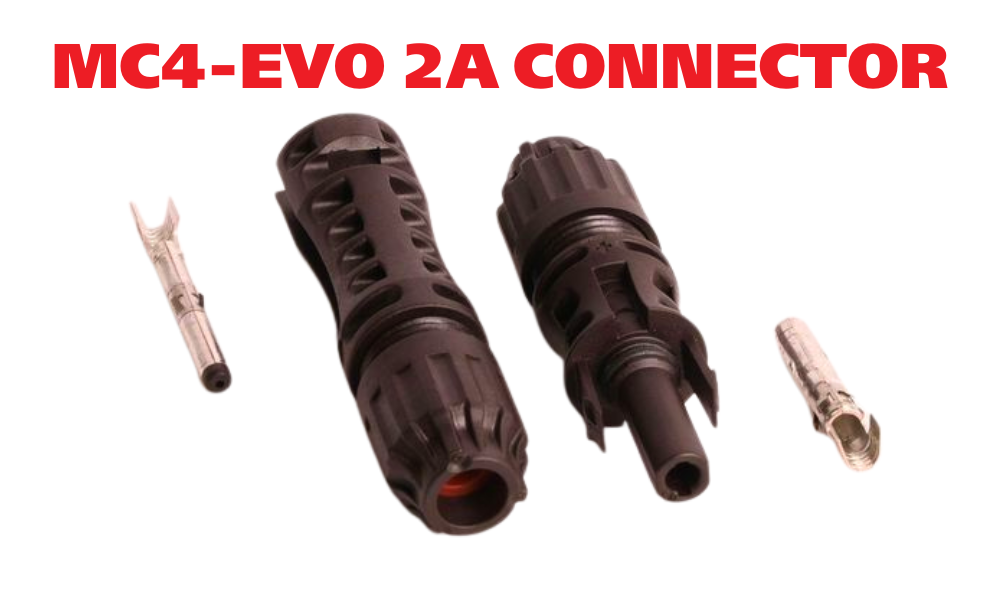
2.3 Water ingress on DC cables and DC connectors
Water ingress is a significant issue for DC cables and connectors in floating photovoltaic systems. Common problems may include corrosion, water ingress, and mechanical stress caused by the movement of floating structures.
DC connectors with an IP68 protection rating are recommended for use due to their ability to withstand immersion in water. Some considerations when connecting DC cables and connectors in floating solar electrical systems include:
- Appropriate materials should be used for terminals, seals, nuts, and bolts.
- Compatibility between the terminal and the DC cable conductor material must be ensured.
- If copper terminals are used, they should be tinned for protection.
MC4 DC connectors, typically made from tinned copper, are recommended to avoid corrosion, as these connectors are often exposed to moist environments and may be subject to water splashing or immersion.
Additionally, during installation, electrical connections should be made immediately after the modules are installed to prevent water ingress and corrosion, while also maintaining the IP protection level of the connectors. Furthermore, regular checks on the tightness of connections between DC cables and connectors should be included in the maintenance plan.
2.4 Mechanical stress on DC cables and cable accessories
Because of waves and wind, floating structures in photovoltaic systems will continuously move and vibrate. This creates stress not only on DC cables but also on accessories such as cable clamps and connectors. If not installed correctly or if there is no careful consideration of the flexibility required, these vibrations can lead to cable breakage or damage to accessories.
3. HELUKABEL’s DC cables for floating photovoltaic systems

The product range of DC cables for solar power systems by HELUKABEL includes various product lines that meet the diverse needs of solar power system applications. Among them, the HELUPOWER SOLARFLEX-X PREMIUM cable series stands out as a product particularly suitable for floating photovoltaic systems.
3.1 Structure of HELUPOWER SOLARFLEX-X PREMIUM DC cables
The HELUPOWER SOLARFLEX-X PREMIUM cable series has the following structural characteristics:
- Conductor: This is a DC cable with a conductor core made of tinned copper, finely stranded in accordance with DIN VDE 0295 Class 5 and IEC 60228 Class 5 standards, ensuring high flexibility, suitable for installation in solar power systems.
- Insulation: This insulation is made from XLPE material. This type of material can withstand high temperatures, ensuring safety for the cable during prolonged operation.
- Outer sheath: The outer sheath is also made from XLPE material, enhancing fire resistance, abrasion resistance, and durability under harsh weather conditions, especially when the cables are exposed to sunlight or outdoor environments.
- Outer sheath color: The outer sheath is in black color.
3.2 Technical data of HELUPOWER SOLARFLEX-X PREMIUM DC cales
This is a DC cable that meets the standards DIN VDE 0283-618, DIN EN 50618, IEC 62930, and is certified by TÜV Rheinland 2 PfG 2750, possessing several outstanding advantages as follows:
- Temperature range: The cable can withstand temperatures ranging from -40°C to +90°C when fixed installed, and the maximum operating temperature of the conductor can reach +120°C, ensuring stable operation in environments with significant temperature variations.
- Nominal voltage: The nominal voltage of this DC cable series is 1000/1000 V AC and 1500/1500 V DC, making it suitable for solar power systems with high voltage requirements. Additionally, the cable can withstand test voltages of up to 6500 V, ensuring electrical safety during operation.
- Bending radius: The minimum bending radius of the cable when fixed installed is 5 times the outer diameter, ensuring flexibility for installation in confined spaces.
3.3 Properties of HELUPOWER SOLARFLEX-X PREMIUM DC cables
This DC cable series is designed to resist various environmental hazards such as UV, ozone, weather conditions, and water, making it suitable for outdoor installation or direct burial underground. Additionally, this cable series is halogen-free, according to DIN VDE 0482-754, and fire-resistant according to DIN VDE 0482-332-1-2 and IEC 60332-1-2, helping to prevent fire spread in case of fire incidents.
| Properties | Standard |
| Halogen-free | DIN VDE 0482-754-1 / DIN EN 60754-1 / IEC 60754-1 |
| Flame-retardant | DIN VDE 0482-332-1-2 / DIN EN 60332- 1-2 / IEC 60332-1-2 |
| Smoke density | DIN VDE 0482-1034-1+2 / DIN EN 61034- 1+2 / IEC 61034-1+2 |
| UV-resistant | DIN VDE 0283-618 / DIN EN 50618 Appendix E |
| Ozone-resistant | DIN VDE 0283-618 / DIN EN 50618 |
| Weather-resistant | DIN VDE 0283-618 / DIN EN 50618 Appendix E |
| DC voltage resistance | DIN VDE 0283-618 / DIN EN 50618 Tab. 2 |
| Improved water resistance | TÜV Rheinland 2 PfG 2750 |
A notable feature of the HELUPOWER SOLARFLEX-X PREMIUM DC cable series is its compliance with the TÜV Rheinland 2 PfG 2750 standard. This standard specifies the requirements for cables with improved water resistance for use in floating photovoltaic systems. TÜV Rheinland developed this standard in collaboration with two cable manufacturers: Studer from Switzerland and KBE-Elektrotechnik from Germany. This standard was developed based on IEC 62930:2017.
3.4 HELUKABEL’s 4 mm² and 6 mm² DC cables for photovoltaic systems
The 4 mm² and 6 mm² DC cables are two common sizes currently available in the HELUPOWER SOLARFLEX-X PREMIUM DC cable series. Additionally, the cross-sectional area of this cable series can reach up to 240 mm², meeting the diverse needs of users. Moreover, other DC cable products and MC4 DC connectors are always available in our online store.
If you still have any concerns or questions, don't hesitate to reach out to HELUKABEL Vietnam's engineering team promptly for detailed assistance.
HELUKABEL® Vietnam
| Address | 905, Nguyen Kiem Street, Ward 3, Go Vap District, Ho Chi Minh City 700000, Vietnam |
| info@helukabel.com.vn | |
| Hotline | +84 28 77755578 |
| Website | www.helukabel.com.vn |
| Discover our products and place orders | Tiki | Product finder |
| Follow us on | Facebook | LinkedIn | Instagram | Youtube | Zalo | WhatsApp | Tiktok | Spotify |

